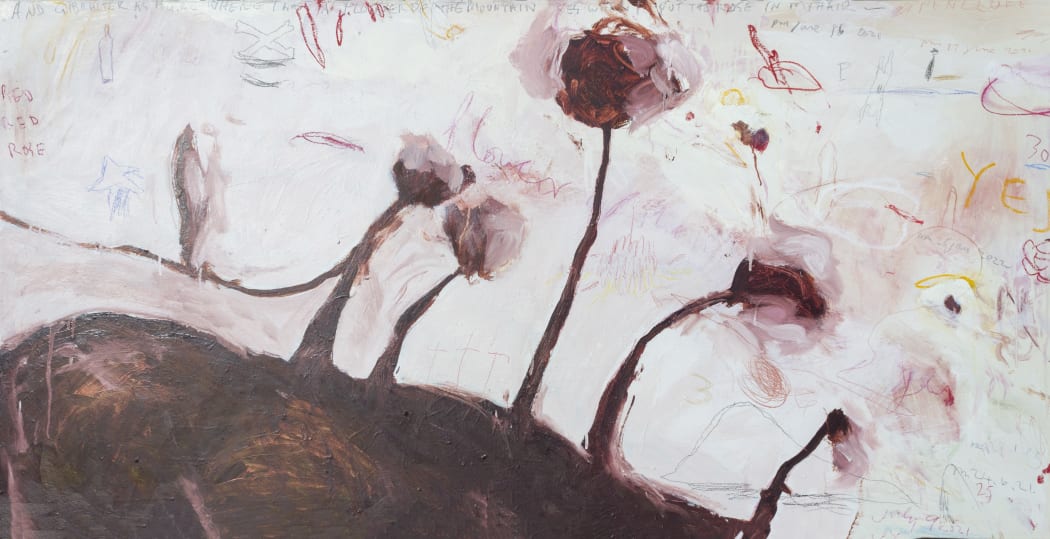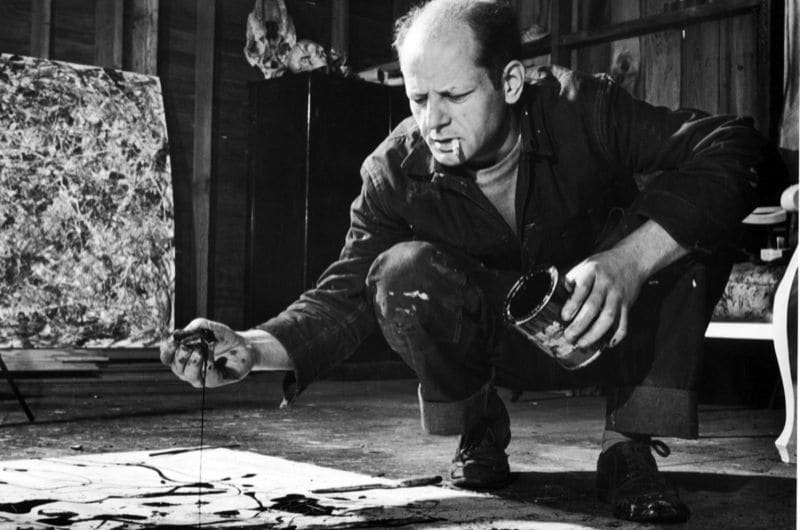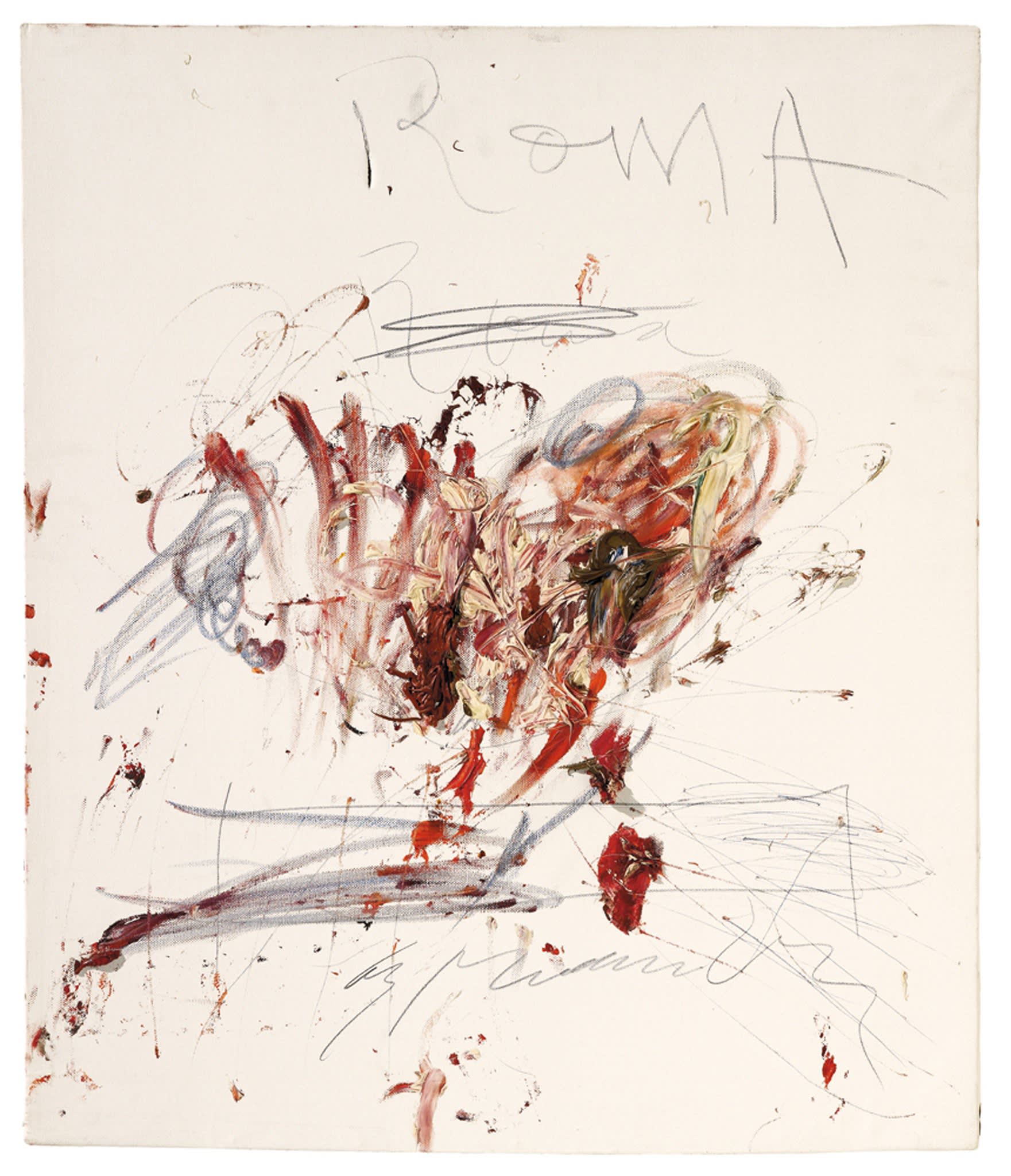
Philip Maltman is associated with sign painting.
The crisis of authorship in art history, which began to set in with the avant-garde movements of the early 20th century and found a new impetus in post-war art, led to widespread reflection on the processes of automation in painting. If the Surrealists used writing and "automatic" drawing (Miró) to explore their unconscious, after the advent of Pollock, free and spontaneous gesture became a vehicle for even more immediate expression: it became the very purpose of painting, which, having left behind a representative dimension, was transformed into action. Hence the definition is given to his style: action painting.

Namath Hans, Jackson Pollock in his studio, 1950 (b\w)
Sign painting uses strokes, or signs, in which no forms or images taken from reality can be identified; what results is a new form of communication, often linked to gesture, which is configured as the pictorial projection of a spontaneous gesture. Sign painting is one of the avant-garde movements inspired by free expression to conquer a new language free of all social constructions, traditions, and ideological schemes of contemporary society. While Joan Miró had sought this freedom in his unconscious by resorting to automatism, in the post-war period, the neo-avant-garde Art Brut was inspired by children's doodles and the art of the mentally ill to avoid any social scaffolding.
In the specific case of Cy Twombly, he approaches sign painting by developing a particular style that moves between line, drawing, painting, and graphic sign. One can see a simplification of the sign, scratched or sometimes pictorial, its casual repetition, often obsessive, that circumscribes areas and outlines rapid and incisive movements.

Cy Twombly in his flat in Rome
In the early 1960s, following the artist's repeated visits to Italy, which soon led him to move permanently to Rome, Twombly immersed himself in the nation's culture, visiting the capital, admiring its ruins, and discovering its history. In Italy, the artist found what he felt was missing in America: a deeply rooted past in the collective cultural heritage that it became universal and could be made his own.
Twombly then developed a specific way of incorporating the past, myth, and images into his painting. During this period, the names of historical and mythological figures appeared on the artist's canvases, together with the titles of masterpieces of art history. To (re)interpret these themes, Twombly's art begins to combine the anti-figurative sign with the linguistic signifier, translating, in the form of written words and "scribbles", the stories and characters of myth and ancient history. The term is an evocation of the past. This linguistic signifier can ignite the observer's imagination, who, like a reader, is invited to build an image in his mind. The words recall the stories of our visual memory, which is thus re-signified through graphic signs of violence and chaos. In a debate of continuous relaunches between the outside, what we see, and the inside, what we imagine.

Cy Twombly, Untitled (Roma), oil paint, pencil, and wax crayon on canvas, 1962, Galerie KarstenGreve .
Twombly's pictorial gesture appears as a spontaneous and immediate transcription of the artist's thought, instantly translated onto the canvas in a rapid passage from mind to hand. Starting from Cy Twombley, Maltman's art is, therefore, a gesture that returns to narrate, to narrate in visual form - this time sign-like and anti-figurative - a mental image. The motion is not the end of painting but a renewed means: a tool for defining a new alphabet, free and universal, comprehensible to all because it is never standardised.
Son of these influences, Philip creates a new kind of landscape painting that focuses on transitions and the constant flux of everyday life. These are not typical nature paintings in that they convey a sense of chaos and unrest, using erratic brushstrokes, paint drips and text to achieve his unsettling yet exciting effect.

Philip Maltman, Where I was a flower of the mountain, oil on canvas, 76x155cm, 2022
Philip Maltman will be at the 508 GALLERY in 508 Kings Road on June 16th with his PV and for a month with his new exhibition FLOWERS OF THE MOUNTAIN.
Stay tunning!
References:
- Kirk Varnedoe, Your Kid could not do this, MoMa, No. 18 (Autumn-Winter, 1994), pp. 18-23
- Storsve Jonas. Cy Twombly. Sieveking, 2017.
